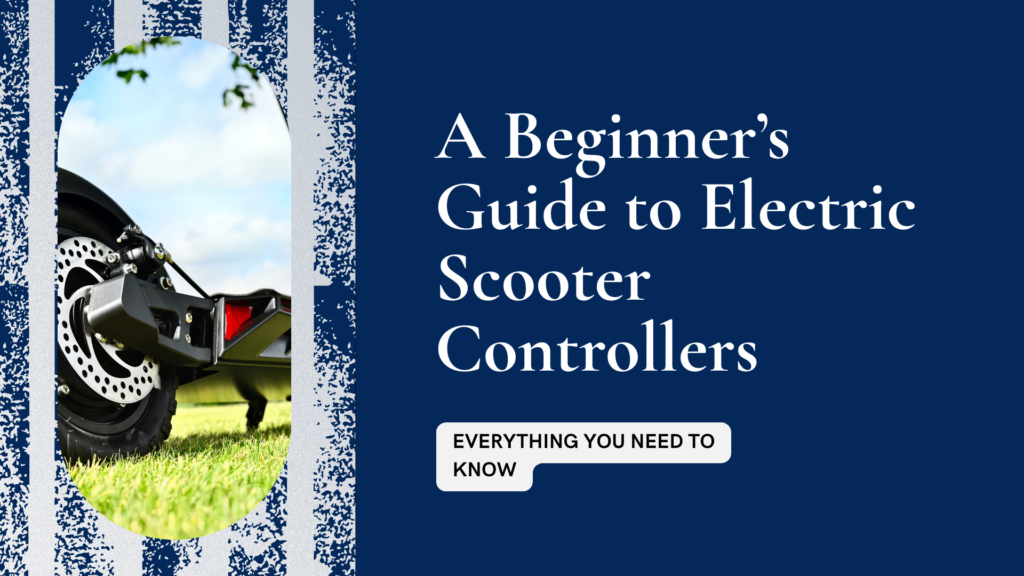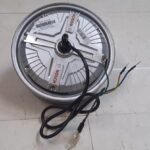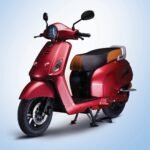
The electric scooter revolution is rapidly transforming how we move around cities. But for many riders and DIY mechanics, the controller remains one of the most misunderstood components.
If you’ve ever asked questions like “What does a controller actually do?” or “Can I upgrade my controller for better performance?”, this guide is for you.
In this blog, we’ll break down what a scooter controller is, how it works, the types available, and how to select the right one for your needs — all in plain, beginner-friendly terms.
What Is an Electric Scooter Controller?
The controller is the brain of your electric scooter. It manages how power flows from the battery to the motor, based on signals from your throttle, brake levers, and other inputs.
Think of it as the “CPU” of your EV.
Why Is It So Important?
Without a properly functioning controller:
- The motor won’t respond to the throttle
- Regenerative braking may not work
- Lights, display, and horn may malfunction
- Power delivery will be unstable or unsafe
The controller defines how your EV performs in terms of acceleration, torque, top speed, and even battery efficiency.
How Does a Controller Work?
- You twist or press the throttle
- Throttle sends a low-voltage signal (1–4.2V)
- Controller reads this signal and opens the power gate to the motor
- Based on controller’s logic, it adjusts the amperage and voltage
- Motor receives this modified power and responds with rotation
Meanwhile, it’s also:
- Monitoring motor temperature
- Reading brake inputs
- Preventing over-current or overheating
- Managing regenerative braking (in some models)
Main Parts of a Controller
- MOSFETs: Control how much power flows through the circuit
- MCU (Microcontroller): The logic chip
- Connectors: For throttle, battery, motor, brake, lights, horn
- Wiring Loom: Color-coded cables to plug into the vehicle
- Heat Sink: Keeps controller cool
Types of Controllers by Motor Compatibility
1. BLDC Controller
- For Brushless DC motors (most common in India)
- Needs Hall sensor wires
- 3-phase motor output: Yellow, Green, Blue wires
2. Brushed Motor Controller
- For older scooters (rare)
- Simpler, only 2 motor wires
- No Hall sensor needed
3. Sine Wave vs Square Wave
- Sine Wave: Smoother, quieter, efficient but expensive
- Square Wave: Slightly noisier, but cheaper and reliable
Browse All EV Controllers
How to Identify a Controller’s Voltage and Wattage
Look for a sticker or label that reads something like:
- Voltage: 48V / 60V / 72V
- Rated Power: 250W / 500W / 1000W
- Peak Current: 20A / 30A etc.
It’s important to match the controller’s voltage with your battery and wattage with your motor.
Common Connector Wires You’ll See
| Wire Color | Function |
| Red & Black | Battery positive and ground |
| Yellow/Green/Blue | Motor phase wires |
| Purple | Throttle input |
| Brown/White | Brake input |
| Orange | Ignition lock |
| Grey | Speed limiter or reverse |
Always use a wiring guide when replacing or upgrading your controller.
Choosing the Right Controller
Match With Motor Power
If your motor is 500W, choose a 500W controller. Too weak → underperformance. Too strong → motor burnout.
Match Voltage
Battery = 48V → Controller = 48V
Battery = 60V → Controller = 60V
Shop by Voltage
Best Controller Options for Beginners
1. 48V 500W Square Wave Controller
- Budget-friendly
- Easy to install
- Great for Hero Electric, Ampere scooters
2. 60V 1000W Sine Wave Controller
- For high-speed scooters
- Smoother throttle response
- Requires good heat dissipation
How to Replace a Controller: Quick Steps
- Turn off battery, remove keys
- Locate the controller (usually under seat or footboard)
- Disconnect all cables one by one
- Install new controller, match wires by color
- Secure controller using clamps or screws
- Test throttle, brakes, and lights before first ride
Buy a New Controller
Safety Tips for Newbies
- Never connect wires without confirming polarity
- Avoid water exposure to open connectors
- Don’t use a 72V controller on a 48V battery
- Don’t pair 1000W controller with a 250W motor
- Use a fuse between battery and controller to prevent damage
When Should You Replace Your Controller?
- Throttle not responding
- Sudden cut-off while riding
- Overheating after 5–10 mins of ride
- Switching to lithium battery setup
- Upgrading motor for better performance
Related Blogs
- Affordable EV Controllers for Daily Use
- Throttle vs Controller: What Impacts Your EV’s Performance More?
- Choosing the Right Motor Kit for Your Electric Scooter
- How to Identify a Failing EV Battery
CTA – Start With the Right Controller
Choosing the right controller is the first step toward a smoother, safer, and more efficient electric ride. Whether you’re building your own EV or just replacing a faulty unit, explore verified, plug-and-play options for your vehicle.
Start your journey here:
Shop Controllers at ElectricScootersParts.in
FAQs – Beginner Controller Guide
Q1. Can I use a 1000W controller with a 500W motor?
It’s not recommended. The motor may overheat or run inefficiently.
Q2. Do I need Hall sensor wires?
Yes, if you’re using a BLDC motor (which most modern scooters do).
Q3. Are sine wave controllers better?
Yes, they’re smoother and quieter but cost slightly more.
Q4. Can I install a controller myself?
Yes, if you’re comfortable with basic wiring and can follow a diagram.





